
How to Use DFRobot Air Quality: Examples, Pinouts, and Specs
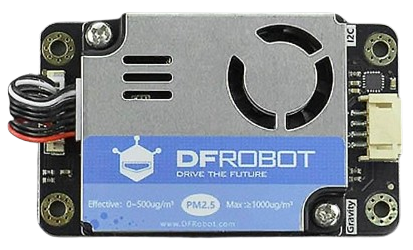
 Design with DFRobot Air Quality in Cirkit Designer
Design with DFRobot Air Quality in Cirkit DesignerIntroduction
The DFRobot Air Quality sensor module is a versatile and reliable device designed to measure various air quality parameters, including carbon dioxide (CO2), volatile organic compounds (VOCs), and particulate matter (PM). This sensor provides real-time data, making it an excellent choice for environmental monitoring, indoor air quality assessment, and smart home applications. Its compact design and ease of integration make it suitable for both hobbyists and professional developers.
Explore Projects Built with DFRobot Air Quality
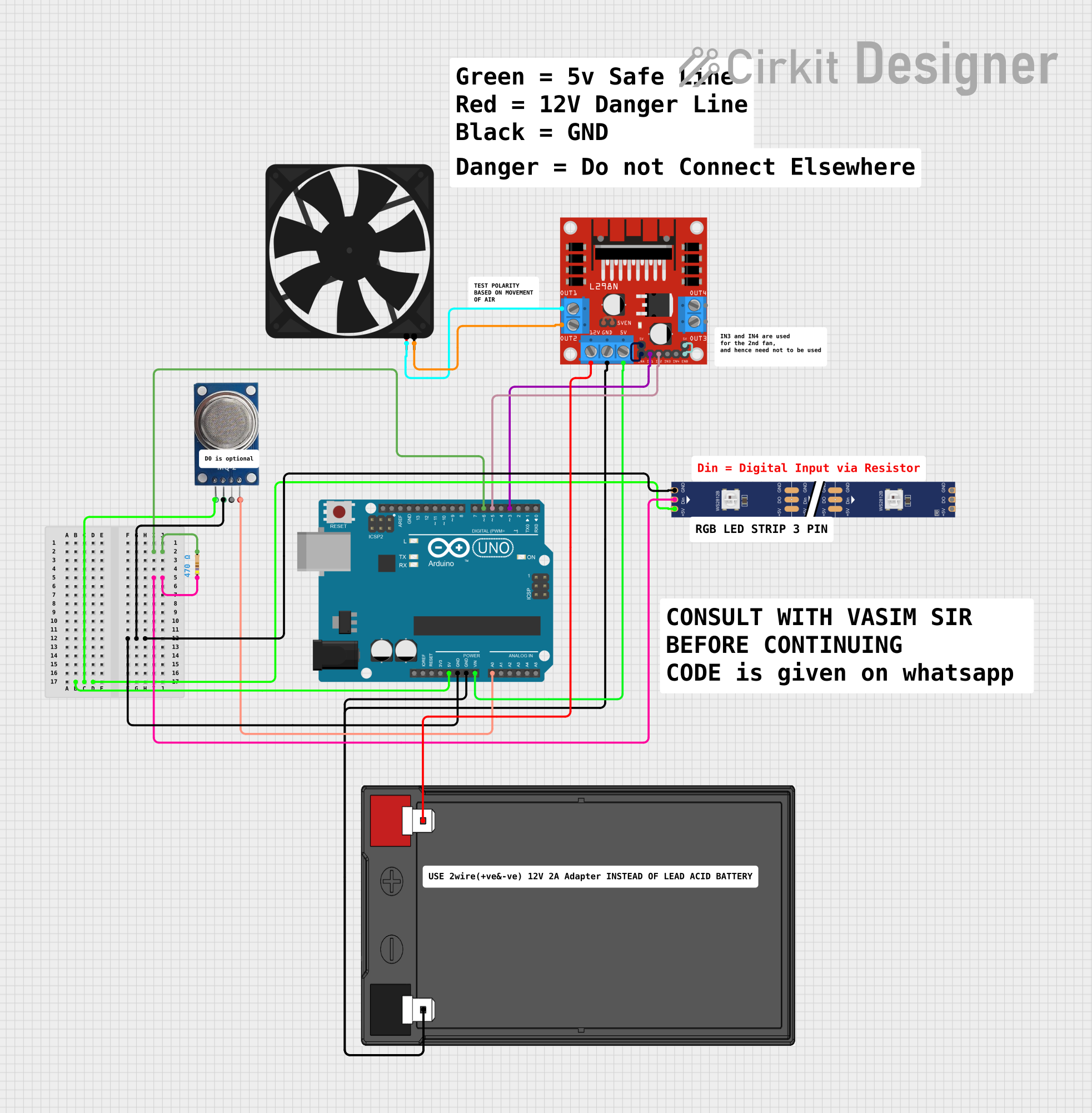
 Open Project in Cirkit Designer
Open Project in Cirkit Designer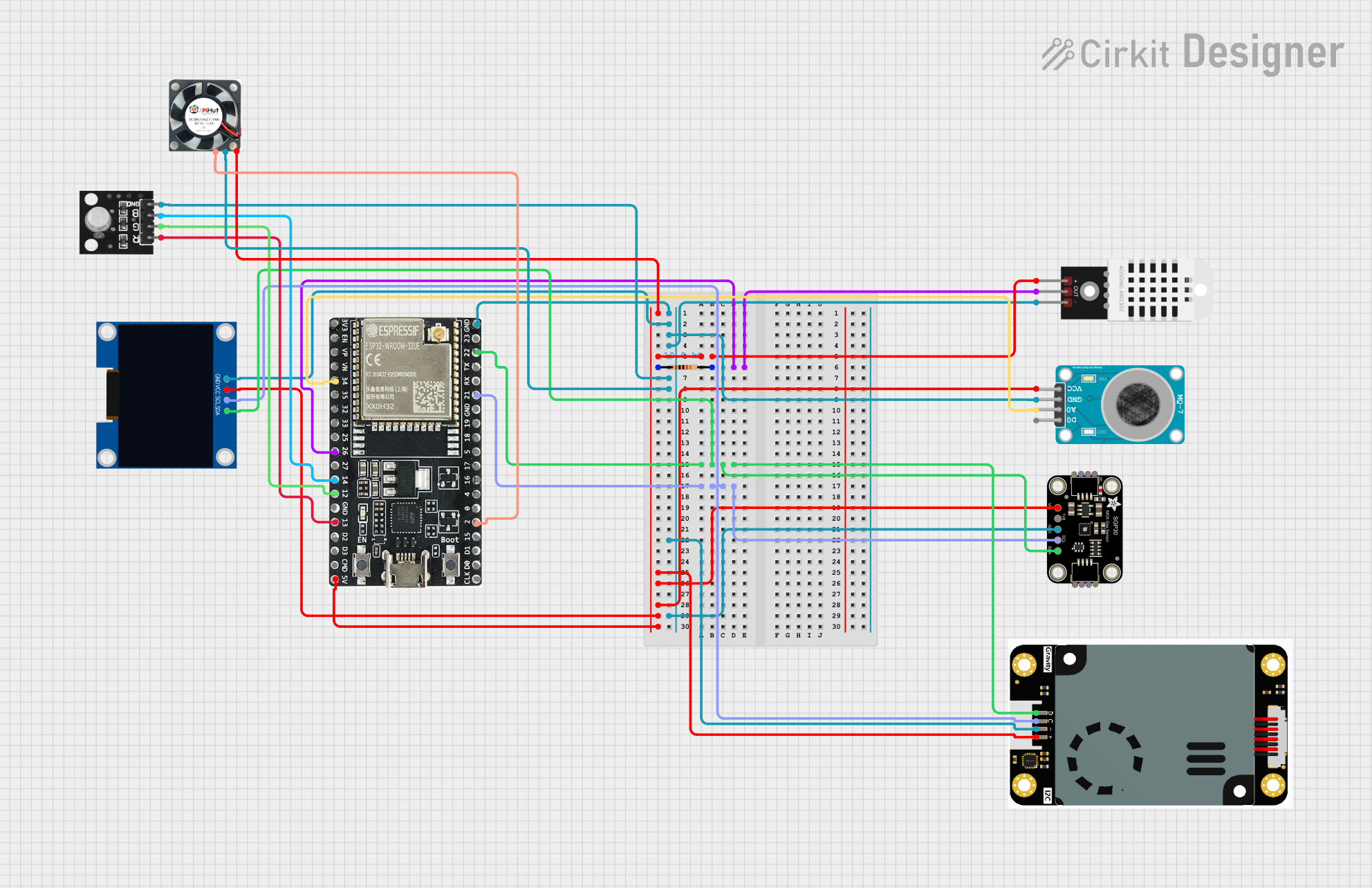
 Open Project in Cirkit Designer
Open Project in Cirkit Designer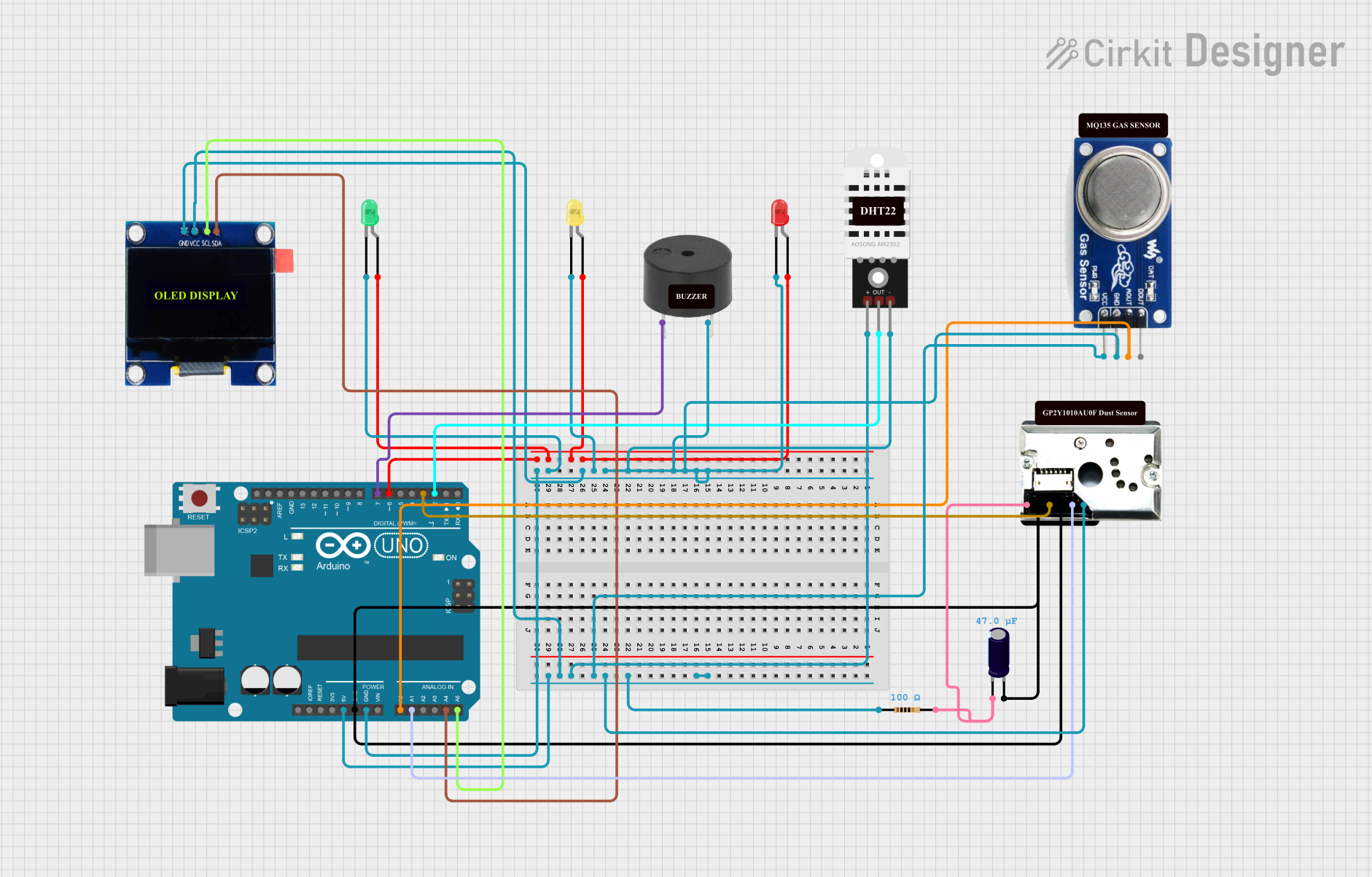
 Open Project in Cirkit Designer
Open Project in Cirkit Designer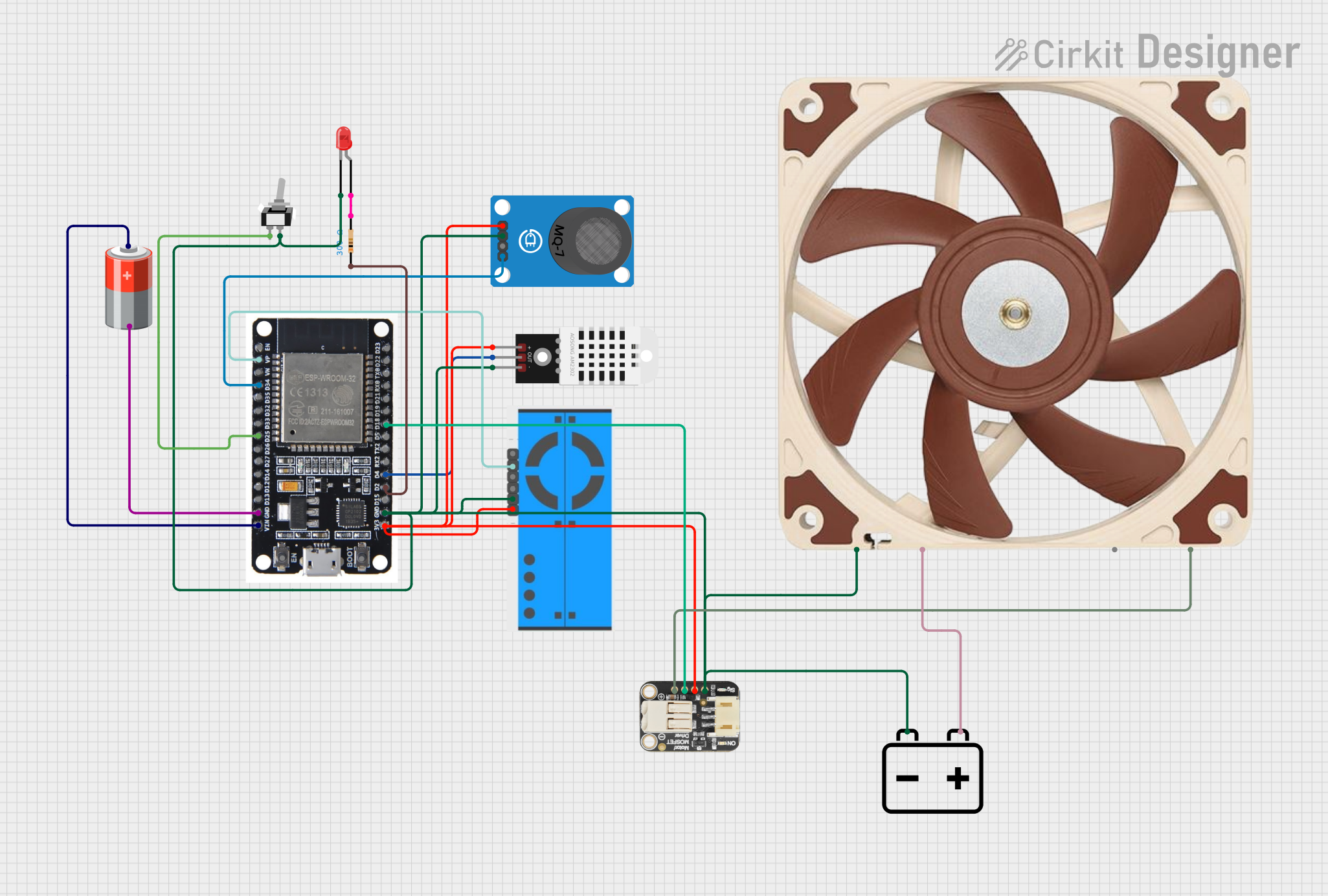
 Open Project in Cirkit Designer
Open Project in Cirkit DesignerExplore Projects Built with DFRobot Air Quality

 Open Project in Cirkit Designer
Open Project in Cirkit Designer
 Open Project in Cirkit Designer
Open Project in Cirkit Designer
 Open Project in Cirkit Designer
Open Project in Cirkit Designer
 Open Project in Cirkit Designer
Open Project in Cirkit DesignerCommon Applications and Use Cases
- Indoor air quality monitoring in homes, offices, and schools
- Environmental monitoring stations
- Smart home automation systems
- HVAC (Heating, Ventilation, and Air Conditioning) optimization
- Industrial air quality control
Technical Specifications
Below are the key technical details and pin configuration for the DFRobot Air Quality sensor module:
Key Technical Details
| Parameter | Specification |
|---|---|
| Operating Voltage | 3.3V - 5V |
| Operating Current | < 20mA |
| Measurement Parameters | CO2, VOCs, PM1.0, PM2.5, PM10 |
| Communication Interface | UART (default), I2C |
| Operating Temperature | -10°C to 50°C |
| Operating Humidity | 0% - 95% RH (non-condensing) |
| Dimensions | 50mm x 36mm x 12mm |
Pin Configuration and Descriptions
| Pin Name | Type | Description |
|---|---|---|
| VCC | Power | Power supply input (3.3V - 5V) |
| GND | Ground | Ground connection |
| TX | Output | UART transmit pin for data output |
| RX | Input | UART receive pin for data input |
| SDA | Input/Output | I2C data line |
| SCL | Input | I2C clock line |
Usage Instructions
How to Use the Component in a Circuit
- Power the Sensor: Connect the VCC pin to a 3.3V or 5V power source and the GND pin to ground.
- Choose Communication Protocol:
- For UART communication, connect the TX and RX pins to the corresponding UART pins on your microcontroller.
- For I2C communication, connect the SDA and SCL pins to the I2C bus of your microcontroller.
- Read Data: Use the appropriate library or commands to read air quality data from the sensor. The sensor outputs data in real-time, which can be processed for display or further analysis.
Important Considerations and Best Practices
- Power Supply: Ensure a stable power supply to avoid inaccurate readings.
- Placement: Place the sensor in an open area for accurate air quality measurements. Avoid placing it near heat sources or in areas with high humidity.
- Warm-Up Time: Allow the sensor to warm up for a few minutes after powering it on to stabilize readings.
- Communication Protocol: Use pull-up resistors (typically 4.7kΩ) on the SDA and SCL lines if using I2C communication.
Example Code for Arduino UNO
Below is an example of how to interface the DFRobot Air Quality sensor with an Arduino UNO using UART communication:
#include <SoftwareSerial.h>
// Define RX and TX pins for SoftwareSerial
SoftwareSerial airQualitySerial(10, 11); // RX = pin 10, TX = pin 11
void setup() {
Serial.begin(9600); // Initialize Serial Monitor
airQualitySerial.begin(9600); // Initialize sensor communication
Serial.println("DFRobot Air Quality Sensor Initialized");
}
void loop() {
if (airQualitySerial.available()) {
// Read data from the sensor
String sensorData = airQualitySerial.readString();
// Print the data to the Serial Monitor
Serial.println("Air Quality Data: " + sensorData);
}
delay(1000); // Wait 1 second before reading again
}
Note: Replace
10and11with the actual pins you are using for RX and TX on your Arduino UNO.
Troubleshooting and FAQs
Common Issues and Solutions
No Data Output:
- Ensure the sensor is properly powered and connected to the correct pins.
- Verify that the communication protocol (UART or I2C) matches your code configuration.
Inaccurate Readings:
- Allow the sensor to warm up for at least 5 minutes after powering it on.
- Ensure the sensor is placed in an open area, away from obstructions or contaminants.
I2C Communication Not Working:
- Check if pull-up resistors are connected to the SDA and SCL lines.
- Verify the I2C address of the sensor (consult the datasheet or library documentation).
FAQs
Q: Can this sensor measure outdoor air quality?
A: While the sensor is designed for indoor use, it can measure outdoor air quality if placed in a protected enclosure to avoid exposure to extreme weather conditions.
Q: How often should I calibrate the sensor?
A: The sensor is factory-calibrated, but periodic calibration (every 6-12 months) is recommended for optimal accuracy.
Q: Can I use this sensor with a Raspberry Pi?
A: Yes, the sensor can be interfaced with a Raspberry Pi using UART or I2C communication. Ensure you use the appropriate libraries for your programming language.
Q: What is the lifespan of the sensor?
A: The sensor has a typical lifespan of 5-7 years under normal operating conditions.